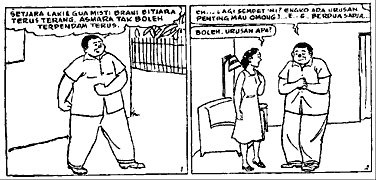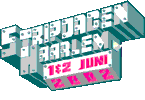Comic
is one evidence of among the many written cultures. It represents countless
stories about living in various times. It tells the way people live and
interact with each other; about their lifestyles, their environment and
even the animals living around them. Comic is generally known as a printed
matter, but nowadays we can see lots of comic that are presented in other
medias, even in Internet. This fact shows that comic can not be separated
with the new culture, which spreads very fast among us.

|
Indonesian comic has been created since the ancient time. It was used to guide or teach
the youngsters about the experiences of their ancestors. We can find these
ancient comics as reliefs at temples such as Borobudur (which sometimes
is called The Middle-age Cathedral). The Borobudur "comic" has about 1460
scenes, which shows manners of praying for mankind. After that, as we
know by now, comic is grown by printed media, such as the newspaper. In
Indonesia, an old influential newspaper named De Java Bode (1938) showed
Clinge Doorenbosí comic titled Flippie Flink. Flippie Flink was
aimed for children. Then there was De Orient, a weekly newspaper, which
presented an adventure comic called Flash Gordon. Beside in these Dutch
newspapers, comic was also found in Chinese and Malay newspapers. An example
is Sin Po, a Chinese newspaper that presented Put On, created by a young
comic artist Kho Wang Gie. Indonesian comic has a long story line and
is influenced by many cultures. Their combination results in a new way
of telling the story.
Image :
[1] Petruk Gareng by (?)
[2] Put On by Kho Wang Gie
|


